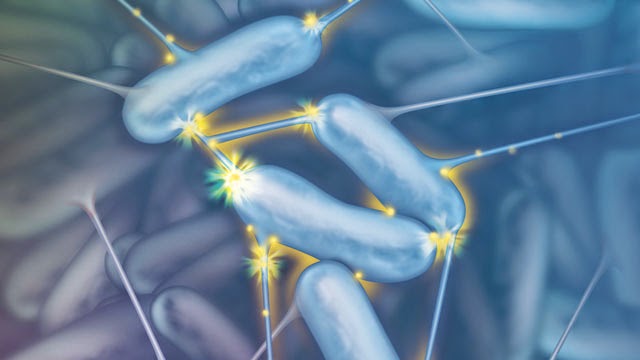May be the most amazing feature of humans is that they always have the urge to move forward, in every aspect of every sector possible. Think about everything this smart species have accomplished. To the moon, sea bed, earth’s core and to the pillars of creation. Although humans also have waged countless wars, well, we will just avoid it for now. It's obvious that the human brain has anything to do with these amazing capacities of humans. Though it also has its own limitations, it gave humans the power to ask: why do we even exist?
Although the details of this spectacular organ are not always found, we can outline the very basic mode through which it works.
Suppose you were walking down the road and a couple just walked by. Then you begin to think about the way they were talking, their posture or even the color of their attire. How does the brain do it?
Let’s begin considering a few known facts-
- Firstly, we all know about a cell type: Neurons.
- Secondly, neurons have chemical compounds that can be used to command the next cell what it knows.
- Thirdly, the neurons are connected to each other in a sequential way, having a receptor cell at the beginning of the chain.
Now let’s visualize what is happening in your head. The couple is walking up to you. You see them so, your eyes or more precisely you Retina catches the picture of them and it turns the picture upside down. The picture is converted into a signal, electric signal and the signal is directed at a specific part of the brain, the Visual Cortex. The picture is then recognized. Below your conscious senses the brain asks itself what is the picture of? It’s a couple. Do I know them? No. Then the brain may keep on going- oh! They look happy, those shades look awesome or what does she see in him. And these are done using the logic (from Cerebrum of the brain) and the memory you have. But it also depends on your attention. You would not even bother about Sir Ananta with his wife was passing by if you have a presentation speech in mind. The brain filters signals and throws out redundant ones or make choices to prioritize one. It is quite amazing and necessary that the brain strikes out over 95% of all the signals it receives and sometimes it does not even get the signal. Our spinal cord performs a handsome number of basic functions or autonomic functions completely by itself. This diversion makes a thousand things happen in our nervous system.
Now if the couple was your ex and his/her new “special someone” things would have been very different. Your primitive brain regions would have been experiencing tremendous activity. Sorrow, despair and most importantly, anger would determine how you react. Here, the signal after being recognized initiates a cascade of hormonal discharge which is the process for you to feel emotions. Now all your judgments or actions will have to get the extra approval as your emotion is actively one of the major driving force. So you can imagine that your brain is juggling with so much data, input-outputs and logic that involves various parts of the brain. You might also consider consoling yourself: my relationship didn’t get that complicated. Thank God!
For explaining how the data processing is done there are several models, but none unanimously accepted. But the basic mechanism is that neurons make up a Neural Circuitry. These circuits are shaped by our previous experiences, priorities, etc. When a signal is to be dealt with the brain, it uses desired circuit. The circuit may include various outputs or motor functions such as hormone secretions, activation of muscles or storage tasks for the future.
The neurons secrete chemical signals for the other neurons up ahead. The transmission goes through the empty space called Synapse. This is where the signal can choose paths. And the signals do take different paths using a different set of neurons. Thus, various possible circuits emerge and we seem to be able to do whatever task is given to us.
Now you can explain why the brain is plastic. With time and experience your way of thinking and actions will change. Our brain can be taught new ways to think to act. We just produce new circuits. Isn’t this what takes place in a child’s brain? In the first 24 months the baby’s brain gets all it can and shapes a sort of operating system or a baseline for: how to react, what to say and when to be fussy. The same process goes on for your entire life, but only in minor extent. Think about a book which changed your outlook when you were a teen or even later.
The brain holds the key to several answers yet we have to wait for a few more days. This amazing organ is only given to humans. You may debate that it's because of eons of evolution or it’s the miracle from above. But its ours to use at the moment.








